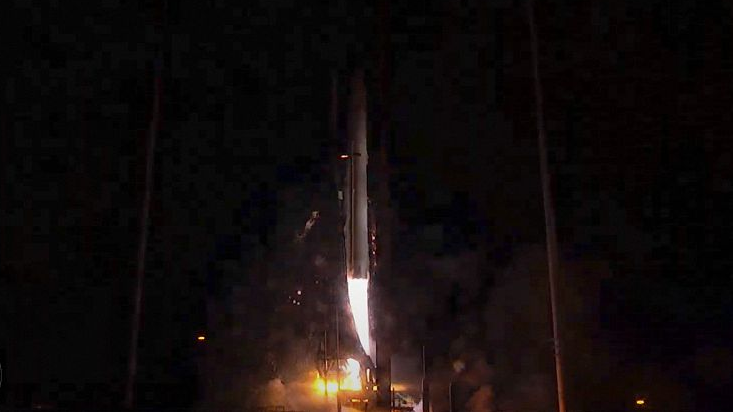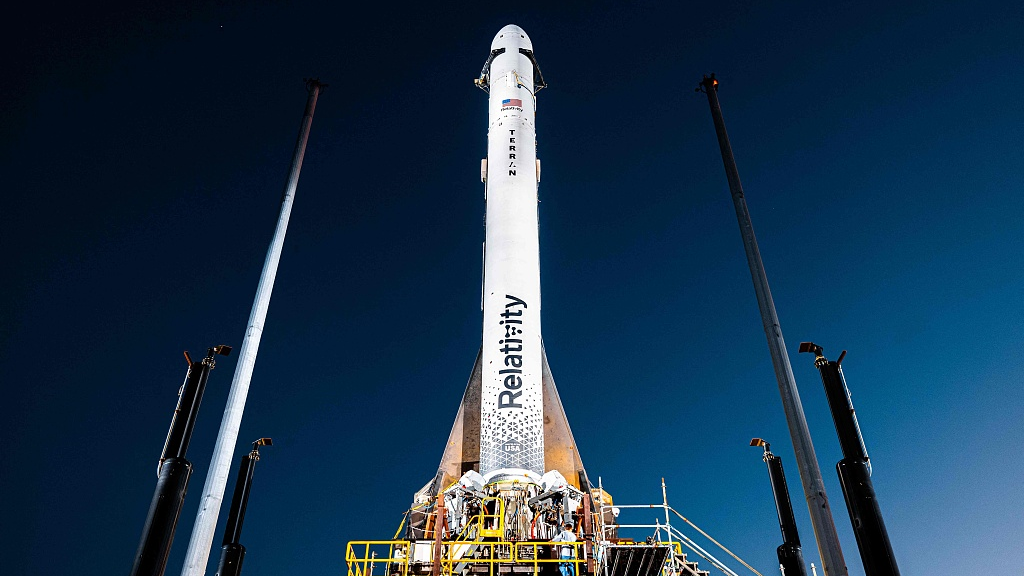
The 3D-printed rocket, Terran 1, launches from Cape Canaveral, Florida, U.S. at 11:25 p.m., March 22, 2023. /AFP
The 3D-printed rocket, Terran 1, launches from Cape Canaveral, Florida, U.S. at 11:25 p.m., March 22, 2023. /AFP
The world's first 3D-printed rocket launched successfully on Wednesday, marking a step forward for the California company behind the innovative spacecraft, though it failed to reach orbit.
Billed as less costly to produce and fly, the unmanned Terran 1 rocket launched from Cape Canaveral, Florida at 11:25 p.m. but suffered an "anomaly" during second-stage separation as it streamed towards low Earth orbit, according to a livestream broadcast by aerospace startup Relativity Space.
While it failed to reach orbit, Wednesday's launch proved that the rocket – whose mass is 85 percent 3D-printed – could withstand the rigors of lift-off.
The successful launch came on the third attempt. It had originally been scheduled to launch on March 8, but was postponed at the last minute because of propellant temperature issues.
Read more: 3D-printed rocket's debut launch aborted at last minute
A second attempt on March 11 was scrubbed due to fuel pressure problems.
Had Terran 1 reached low Earth orbit, it would have been the first privately-funded vehicle using methane fuel to do so on its first try, according to Relativity.
Terran 1 was not carrying a payload for its first flight, but the rocket will eventually be capable of putting up to 1,250 kilograms into low Earth orbit.
The rocket is 33.5 meters tall with a diameter of 2.2 meters.
Eighty-five percent of its mass is 3D-printed with metal alloys, including the nine Aeon 1 engines used in its first stage and the one Aeon Vacuum engine employed in the second.
It is the largest ever 3D-printed object and was made using the world's largest 3D metal printer, according to the Long Beach-based company.

The 3D-printed rocket, Terran 1, on the launch pad in Cape Canaveral, Florida, U.S., March 10, 2023. /AFP
The 3D-printed rocket, Terran 1, on the launch pad in Cape Canaveral, Florida, U.S., March 10, 2023. /AFP
Built in 60 days
Relativity's goal is to produce a rocket that is 95 percent 3D-printed.
Terran 1 is powered by engines using liquid oxygen and liquid natural gas – the "propellants of the future," capable of eventually fueling a voyage to Mars – the company said.
Relativity is also building a larger rocket, the Terran R, capable of putting a payload of 20,000 kg into low Earth orbit.
The first launch of a Terran R, which is designed to be fully reusable, is scheduled for next year.
Relativity said its 3D-printed versions use 100 times fewer parts than traditional rockets and can be built from raw materials in just 60 days.
(With input from AFP)